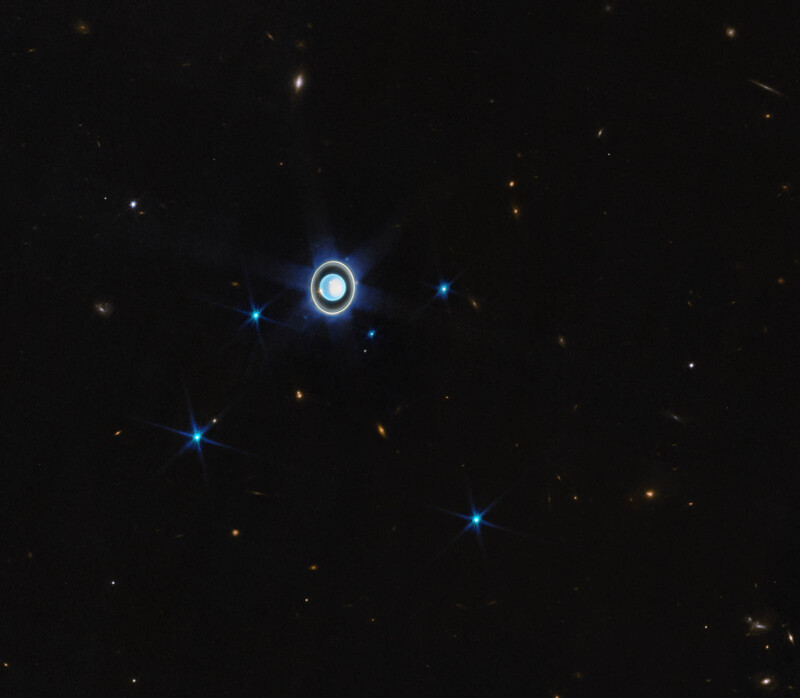Webb Captures a Spectacular Photo of Uranus and its Rings
![]()
The James Webb Space Telescope has captured a gorgeous photo of the seventh planet from the Sun, Uranus. Not only that, but the rings around the ice giant are clearly visible for only the third time.
The Webb team says that the visual data captured here demonstrates the orbiting observatory’s unprecedented sensitivity for even the faintest of dusty rings.
While images of Uranus have been captured before, clearly seeing its rings is much rarer. Previously, they have only been visible by two other facilities: the Voyager 2 spacecraft that flew by the planet in 1986 and from the Keck Observatory which is equipped with advanced adaptive optics.
The image above, which is a zoomed-in version of the wider shot seen below, was shot with the Near-Infrared camera, or NIRCam, and combines the data from two filters at 1.4 and 3.0 microns, which are shown in blue and orange, respectively. The planet displays a blue hue in the resulting representative-color image, the Webb team explains. The photo was captured in a relatively short 12-minute exposure.
Uranus has 13 known rings and 11 of them are visible in Webb’s photo of the planet. The team notes that some are so bright when seen with Webb’s advanced imaging systems that when they are close together they appear to merge into one larger ring.

“Nine are classed as the main rings of the planet, and two are the fainter dusty rings (such as the diffuse zeta ring closest to the planet) that weren’t discovered until the 1986 flyby by Voyager 2. Scientists expect that future Webb images of Uranus will reveal the two faint outer rings that were discovered with Hubble during the 2007 ring-plane crossing,” the Webb team explains.
Also visible in the photo are some details of the planet itself which weren’t visible in previous photos. For example, in Voyager 2’s flyby images, the planet appeared to be an almost featureless blue-green ball. But at the infrared wavelengths that Webb is capable of seeing, much more is visible including the polar cap which can be seen on the right side of the planet.
“This polar cap is unique to Uranus — it seems to appear when the pole enters direct sunlight in the summer and vanishes in the autumn; these Webb data will help scientists understand the currently mysterious mechanism behind this feature,” the European Space Agency says.
“Webb has revealed a surprising aspect of the polar cap: a subtle enhanced brightening at the centre of the cap. The sensitivity of Webb’s NIRCam and the longer wavelengths it can see may explain why we can see this enhanced polar feature of Uranus when it has not been seen with other powerful telescopes like the NASA/ESA Hubble Space Telescope and the Keck Observatory.”
In the wider shot above, Webb also captured many of Uranus’s 27 known moons. Those that aren’t visible are very small, making them too faint to appear even to Webb, considering the short exposure time.
There is more to come on this front. Uranus will continue to be observed by scientists and additional studies are currently in progress, some of which will take place with Webb again.
Image Credits: NASA, ESA, CSA, STScI, J. DePasquale (STScI)